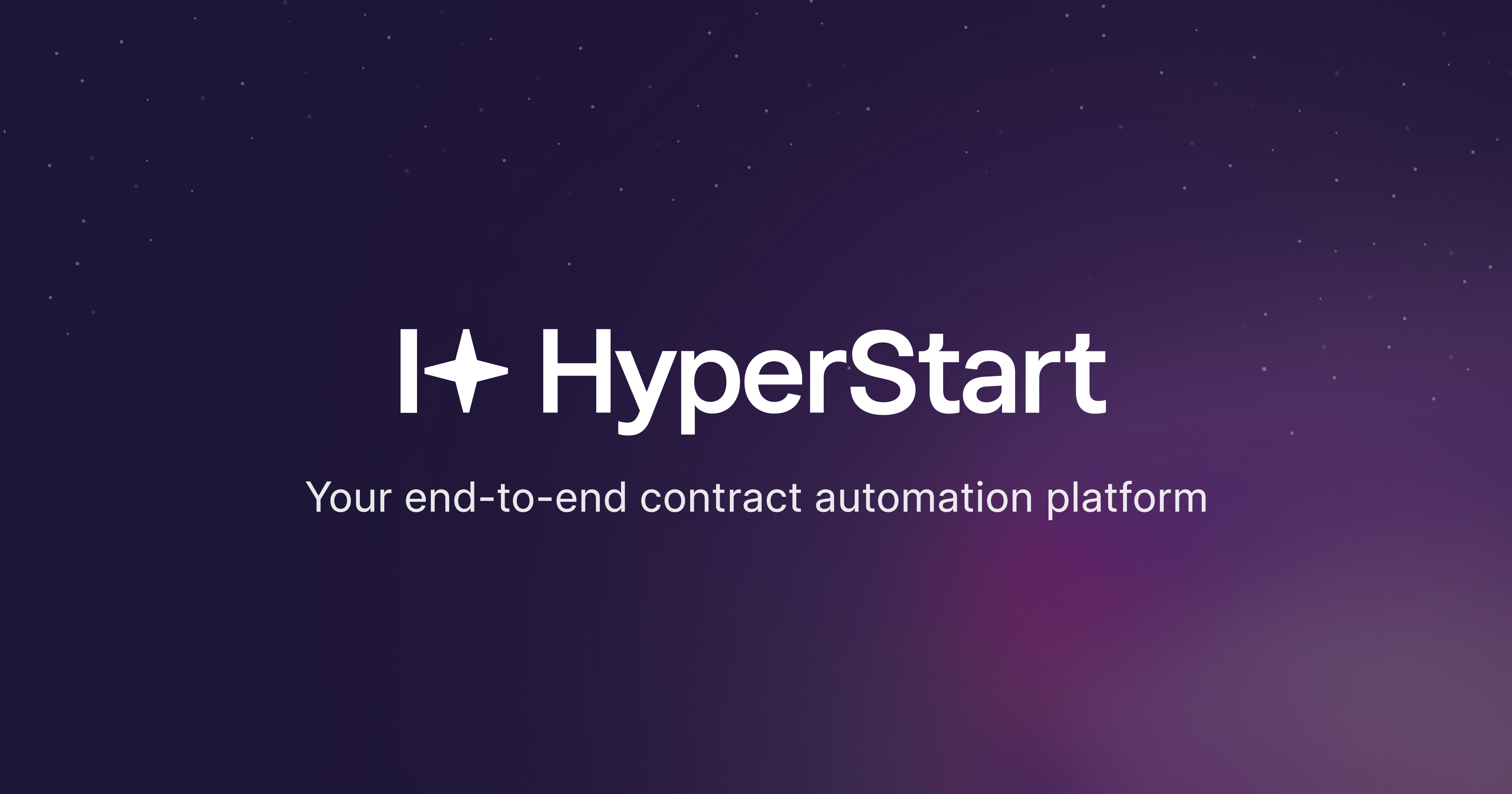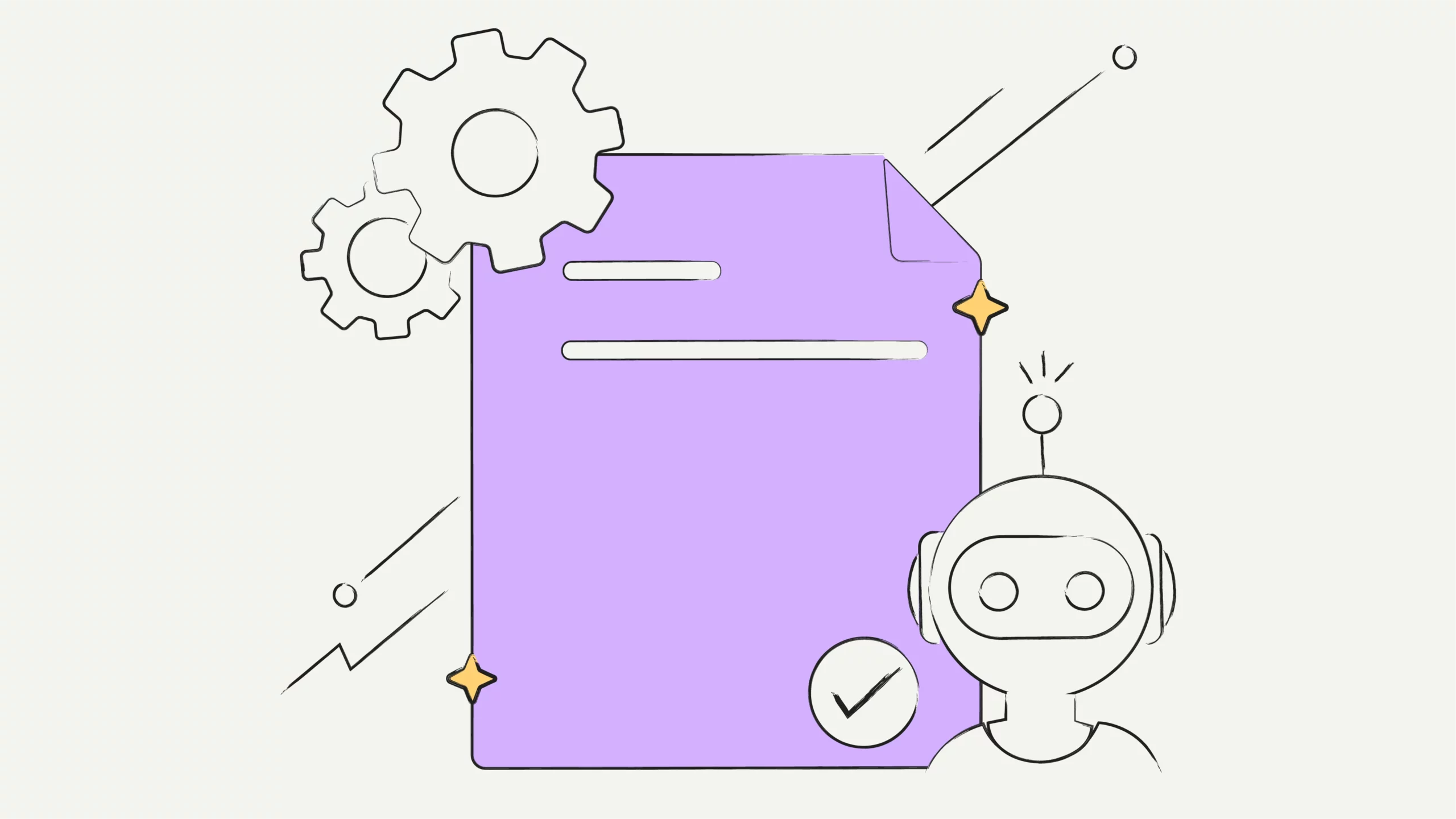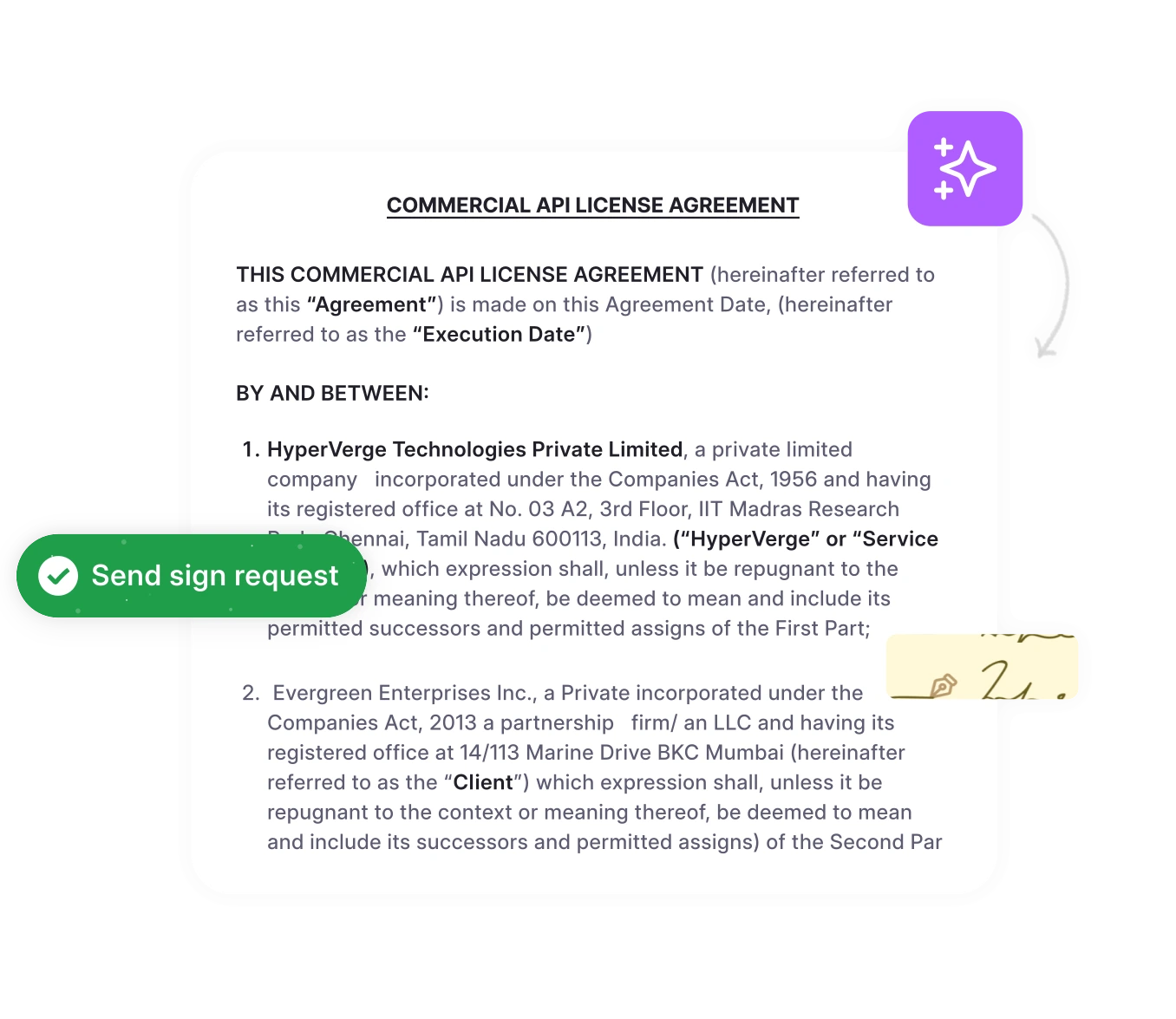The business world runs on deals, but getting those deals signed can feel like an endless game of chess – slow, cumbersome, and often frustrating. Traditional contract management is stuck in the past. It relies heavily on manual processes, leading to slow turnaround times, increased errors, and a lack of visibility into contract statuses. These outdated systems struggle to keep up with the dynamic needs of modern businesses, resulting in missed deadlines, compliance risks, and financial losses.
But what if there was a way to inject some serious intelligence into the process?
The advent of contract management software is revolutionizing contract negotiation. By leveraging advanced analytics and automation, these technologies streamline the negotiation process, providing previously impossible insights.
Follow ahead to learn about contract negotiation practices, challenges, and the role of contract management software in error elimination.
What is contract negotiation?
Contract negotiation is a process in which two or more parties discuss the terms and conditions of a proposed contract to reach a mutual agreement. It begins with thorough preparation where each party assesses its needs and researches the other party’s interests, forming the foundation of an effective contract negotiation workflow. The negotiation starts with open dialogue with initial positions on key contract terms such as pricing, deliverables, and timelines.
The bargaining phase follows, where parties engage in a give-and-take process to reconcile differences through concessions and compromises. Once the key terms are agreed upon, the legal team drafts and reviews the contract to ensure compliance with laws and regulations. Both parties conduct a final review before signing the contract, making it legally binding.
Effective contract negotiation strategies prevent disputes and misunderstandings, fostering strong business relationships and better outcomes.
An eCommerce company wants to build a website for its store, with a budget of $20,000 and a 3-month timeline. A web development agency counters this with a $30,000 quotation and a 4-month timeline. The two parties negotiate the deal at a $25,000 and a 3.5-month timeline, adding a clause for extra charges in case the website’s scope expands.
Why is contract negotiation important?
The importance of contract negotiation lies in its ability to ensure that agreements are fair, clear, and beneficial for all parties involved. Here’s how negotiating contracts is important:
Clarifies terms and conditions: Negotiation ensures both parties fully understand their obligations, reducing the risk of misunderstandings and disputes.
For instance, a software vendor and a client might clarify maintenance responsibilities, avoiding future conflicts over system downtimes.
Identifies and manages risks: By negotiating, potential risks and liabilities are addressed, allowing for protective clauses and contingencies to be included.
Example: A vendor might add a force majeure clause to mitigate liabilities during unforeseen events like natural disasters.
Encourages compromise: Effective negotiations find a middle ground where both sides benefit. For example, you might negotiate a lower price in exchange for a longer contract term.
Example: A supplier could offer a discounted rate for a 5-year contract instead of a 2-year agreement, balancing short-term losses with long-term gains.
Builds strong relationships: Negotiation is a conversation that can foster trust and collaboration, setting the foundation for a successful partnership.
Example: A construction company and a subcontractor could agree on phased payments to align with project milestones, ensuring mutual confidence.
Prevents future conflicts: Resolving disagreements during negotiations helps avoid contract disputes and litigation down the line.
Example: A data-sharing agreement might include GDPR compliance clauses to ensure adherence to privacy laws.
Leads to smoother execution: Well-negotiated contracts with clear terms lead to better contract performance management and efficient execution.
Example: A marketing agency could negotiate detailed reporting requirements, ensuring both parties align on deliverables throughout the project.
Overall, negotiation is an important part of agreeing to a contract. However, to save the best deal, knowing when to negotiate a contract is important.
When is the right time to negotiate a contract?
Negotiation is a critical stage in the contract lifecycle management process, but timing is everything. Knowing when to negotiate can help secure favorable terms without unnecessary delays, while avoiding negotiation at the wrong time can keep the process efficient and friction-free.
Once you have received the contract from the counterparty, you can review and redline it. Once reviewed, the contract must be negotiated with the counterparty to amend the unfavorable clauses and terms. Do note that negotiation is important only if a contract needs to be negotiated.
In many cases, standardized agreements like NDAs won’t need to be negotiated. Moreover, unnecessary negotiations will only increase the friction in the contract lifecycle and may even delay the deal’s execution. Once all parties have reached favorable terms, the contract is ready to be signed. Apart from knowing when to negotiate a contract, it is also important to know the right way to negotiate a contract. Let’s find out more about this in the coming section.
When to negotiate a contract
1. Upon receiving the initial draft
Once you have received a contract from the counterparty, it’s the right time to review and redline the document. Negotiation at this stage helps ensure that unfavorable terms are amended before signing.
Example: If a supplier contract includes an automatic renewal clause you’re uncomfortable with, negotiating upfront allows you to remove it before it becomes binding.
2. In high-stakes agreements
Complex contracts, such as vendor agreements or joint ventures, often require detailed negotiations to align both parties’ goals.
Example: A SaaS provider might negotiate service-level agreements (SLAs) to specify uptime guarantees and penalties for downtime.
3. When terms don’t align with objectives
If the contract’s language doesn’t support your goals, such as pricing models, delivery schedules, or legal compliance, negotiation ensures that the terms are tailored to your needs.
When NOT to negotiate a contract
1. Standardized agreements
Many contracts, such as NDAs or clickwrap agreements, are non-negotiable and are designed for quick acceptance. Attempting to negotiate these could create unnecessary delays.
Example: Negotiating minor clauses in an NDA might add days to the process without providing meaningful benefits.
2. Unnecessary redlining
Avoid redlining clauses that don’t significantly impact your business. Over-negotiation can frustrate the counterparty and prolong the deal’s execution.
Example: Insisting on changing a harmless jurisdiction clause in a low-value contract may cause unwarranted friction.
3. Without adequate preparation
Negotiating without understanding the other party’s objectives or having clear priorities can weaken your position and lead to suboptimal outcomes.
- Negotiate only when it adds value to the agreement or protects your interests.
- Avoid unnecessary back-and-forth over inconsequential details to maintain momentum in the contract lifecycle.
Commonly negotiated contract terms
Understanding which terms are most often negotiated helps you prepare and prioritize. Key areas include:
- Scope of work: Defines deliverables, timelines, and responsibilities.
- Pricing and payment terms: Details on costs, payment schedules, late fees.
- Duration and termination: Specifies contract length, renewal, and exit clauses.
- Confidentiality and non-disclosure: Protects sensitive information.
- Intellectual property rights: Outlines ownership and usage of IP created.
- Warranties and indemnities: Allocates liability and ensures quality.
- Performance metrics: Sets benchmarks for service levels and quality.
- Dispute resolution: Determines how conflicts are resolved (e.g., arbitration, litigation).
- Force majeure: Addresses unforeseen events like natural disasters.
How to negotiate a contract in 6 steps
Frictionless and healthy negotiation requires a strategic approach. Follow this process to negotiate your deals with the best outcomes:
1. Prepare for negotiation
Define objectives, understand your goals, and research the other party’s needs.
Research the other party’s needs, priorities, and negotiation style.
Gather data from previous negotiations, market trends, and legal requirements.
Define your deal breakers and negotiable terms.
2. Start the dialogue
Start with a positive attitude to create a collaborative environment.
Clearly outline your goals and encourage the other party to share theirs.
Agree on communication methods and negotiation timelines.
3. Discuss the deal
Stand firm on non-negotiables but offer fallback options for mutual satisfaction.
Listen actively to the other party’s concerns and present your terms clearly.
Decide tools to use for editing, redlining, and commenting.
Track all revisions for transparency and future reference.
4. Solving the problem
Identify and acknowledge negotiation obstacles and find acceptable compromises.
Explore creative solutions and use objective criteria to support decisions.
Bring in legal or subject matter experts as needed for complex issues.
5. Finalize the agreement
Summarize key points of the agreement to ensure mutual understanding.
Draft, review, and revise the agreement as needed in clear, concise language.
Use version control to manage edits and ensure all parties review changes.
6. Close and sign
Formally sign the contract and establish the next steps for implementation.
Maintain communication to address any issues.
Foster future negotiation opportunities.
Following this contract negotiation process ensures systematic and beneficial negotiations. However, even with this process, negotiation has its own challenges and setbacks. The coming section outlines these challenges along with their respective solutions.
Tired of endless emails and delays in approvals?
HyperStart CLM enables real-time collaboration for faster contract negotiation.
7 Key challenges in contract negotiation [+ solutions]
Negotiating a contract should be about getting the best deal for your business, but it often becomes a stressful ordeal. As per the Contract and Commercial Management Benchmark Report by World CC, contract negotiation is the 2nd most time-consuming CLM stage.
However, negotiating an agreement becomes easy through contract management software. Here’s a glimpse into the contract negotiation pain points and how using contract management tools helps overcome these challenges:
1. Lack of data for negotiation
Historic contract data helps negotiate better deals. However, with contracts scattered across different locations like filing cabinets, drives, emails, and CRMs, it is challenging to access and leverage this data for negotiating deals.
Solution: Contract management software provides a centralized repository where all contracts are stored and visualized digitally. These repositories extract contract data and report on them, giving contract managers the insights they need to negotiate the best deals.
2. Tracking edits and revisions
Edits are often made with different colored pens and handwritten corrections. But was that red underline from you, your colleague, or the other party? Did that green strikethrough mean the clause was accepted or rejected? The lack of clarity can lead to misunderstandings and delays as you untangle the edit history.
Solution: With contract management software, every change made to a contract is logged, showing who made it and when. This gives you a clear picture of the negotiation’s history, eliminating any mystery about who did what. It’s like having a time-stamped log of all edits.
3. Ensuring compliance with legal terms
Ensuring compliance with all legal requirements can be a complex task. Regulations and laws can change frequently, and keeping track of updates is challenging. Missing a recently updated regulation related to data privacy or intellectual property rights could lead to legal repercussions.
Solution: Contract management systems integrate with legal databases to monitor changes in laws and regulations, ensuring that contracts always align with the latest legal standards. With built-in compliance tools, users can easily enforce regulatory requirements like data privacy, intellectual property rights, and industry-specific laws.
4. Dealing with unequal negotiation positions
When negotiating with a larger or more influential counterparty, smaller businesses may feel compelled to accept terms that are less favorable, risking long-term disadvantages.
Solution: Use objective criteria, like market benchmarks or industry data, to justify your terms and establish credibility. Focus on mutual benefits to create a collaborative environment and prepare a clear strategy outlining non-negotiables and acceptable compromises. This preparation helps you approach negotiations with confidence and clarity.
5. Ambiguity in terms and language
Vague or poorly defined terms in contracts can lead to misunderstandings and disputes, particularly around critical aspects like deliverables or timelines.
Solution: Ensure all terms are precise and use straightforward language to avoid confusion. Conduct a thorough contract review with legal and operational teams to address unclear clauses. Including a glossary of key terms can further clarify expectations and reduce ambiguity.
6. Over-negotiation and delays
Prolonged redlining and excessive focus on minor clauses can unnecessarily delay contract finalization, impacting business timelines.
Solution: Prioritize key terms that directly affect the deal’s success, such as payment structures or liability clauses. Utilize a negotiation playbook with predefined acceptable terms to minimize unnecessary revisions and accelerate the process, ensuring timely execution.
7. Inefficiency in using traditional tools like Google Docs and Word
Traditional tools such as Google Docs and Microsoft Word often lead to inefficiencies in contract negotiations. Issues like scattered version histories, lack of visibility into real-time changes, and cumbersome email threads for edits create confusion and delays. For example, tracking who made a specific change or why a clause was modified can be time-consuming and prone to error.
Solution: Centralize contract negotiation using tools that provide version control, real-time collaboration, and a complete audit trail of changes. Unlike Word or Google Docs, dedicated contract management platforms enable teams to work on the same document simultaneously while maintaining a clear history of edits and reviewer comments. This reduces back-and-forth communication and ensures everyone is on the same page.
It is clear that contract management software is an excellent tool for negotiating contracts. They help maximize value and reduce friction in the negotiation process. Apart from using software, there are certain negotiation best practices to implement in your CLM process.
Missed deadlines are the enemy of any good lawyer
HyperStart can help ensure you never miss a deadline again by providing a centralized platform for managing your casework deadlines and client communication.
5 Tips for successful contract negotiation
Following contract negotiation, best practices can make the process efficient and mutually beneficial for all parties.
Define a negotiation strategy: A negotiation strategy gives clarity on objectives and helps identify non-negotiable and compromisable terms. This strategy should cover your business objectives, core objectives, and long-term visions.
Negotiate deals in chunks: Negotiate parts of contracts with relevant stakeholders one at a time. This helps avoid “all-or-nothing” situations and helps focus on one objective at a time.
Prioritize your core objectives: What parts of the deal are most important for you? It is important to negotiate key objectives first to ensure nothing is left to chance later. This also helps counterparties understand your deal-breakers.
Negotiate with research: Conduct market research, analyze previous contracts for negotiation patterns, and research your counterparties. This approach helps gain optimal insights—increasing your overall negotiation power.
Compromise for long-term benefits: Think in terms of long-term benefits and business partnerships. Compromise in a way that fosters healthy partnerships with counterparties, increasing your long-term gains.
These tips and best practices are aimed at making negotiation clear, sleek, and beneficial for all parties. Now that you know tips and tricks for effective negotiation, you are all set to negotiate and secure excellent deals for your organization.
Solve key contract negotiation hurdles with HyperStart CLM
Contract negotiations are often slowed by excessive back-and-forth, multiple contract versions, and difficulty tracking redlining progress. These inefficiencies are common pain points for legal and business teams.
Use pre-approved templates to reduce revisions: Standardize initial drafts with legally approved terms to minimize unnecessary edits.
Design workflows for smoother negotiations: Customize workflows to prioritize key tasks, ensuring efficient approvals and reduced delays.
Track contract progress in real time: Stay updated on the negotiation status and quickly address bottlenecks as they arise.
Store contracts in a centralized repository: Maintain all contract versions in one location, eliminating confusion and fostering transparency.
Leverage AI for smarter negotiations: Quickly review counterparty documents, flag risky terms, and identify opportunities for improved outcomes.
HyperStart CLM helps organizations achieve faster, more efficient contract negotiations while minimizing risks and miscommunications. Schedule a CLM demo for a hands-on exploration of the software’s features and how they can help in contract negotiations and beyond more efficiently.








![How to Negotiate SaaS Contracts [A Guide]](https://www.hyperstart.com/wp-content/uploads/2025/02/Blog-60-purple-scaled.webp)



